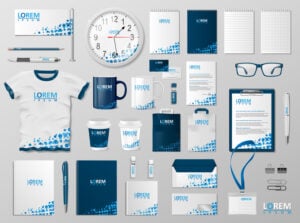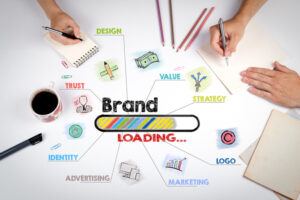When it comes to branding and marketing, there are two overarching categories: the controllable and the uncontrollable. The issue that many businesses face in the early days is focusing too much on the latter while unintentionally ignoring the former. As you can guess, this can cause big issues down the road.
Don’t worry about the uncontrollable
Let’s begin with some uncontrollable factors of marketing to provide some context for future branding and marketing efforts. In most cases, uncontrollable factors are synonymous with environmental factors. These are elements like political conditions, economic issues, technological advancements, competition, and more. As the name suggests, these are factors that you cannot control, but will be faced with.
Let’s take a look at a few of these uncontrollable factors to gain a better understanding of which ones could affect your marketing strategy moving forward:
- Changes in policy. Any time there’s a significant change in politics – such as a new party entering the White House or a new majority in the House or Senate – there’s potential for business policy changes. This can positively or negatively affect certain businesses.
- Large scale economics. Fluctuations in the economy can certainly impact marketing. We saw this in 2009 and 2010 when consumers tightened their wallets and honed in discretionary spending. This influenced how companies across many industries targeted customers.
- Technological advancements. When technology develops rapidly, it can either catapult a brand to the top or push the brand to the wayside. For example, think about how the growth in smartphone technology (with powerful built-in cameras) quickly stifled a large portion of the digital camera industry. This seriously impacted the marketing and branding approaches for dozens of different companies.
- New competition. Any time new competition enters an industry, it has a major influence on the choices brands make moving forward. Sometimes competition breeds creativity in marketing and branding, while other times it causes everyone to blend together.
- Changes in consumer taste. Gradually, consumer tastes change. When this happens on a large-scale level, it causes major reverberations that are felt all the way to a company’s marketing department.
As you can clearly see, certain factors are totally out of your control. But the goal isn’t to worry about these issues or hide from them. Instead, you need to be aware of them. The more you know about these uncontrollable elements, the better you’ll be able to respond.
Focus on the controllable
We all like to be in control. There’s something satisfying and reassuring about knowing our decisions directly impact the result – whether the consequences are positive or negative is sometimes beside the point. In particular, there are two overarching categories of controllable marketing elements: brand persona and visual brand assets.
1. Brand persona
When it comes to a person, there are physical traits or looks – such as blonde hair, blue eyes, short, muscular, etc. – and then there are internal characteristics or personality – such as funny, smart, or awkward. This combination of looks and personality make up the individual and how others perceive them. Well, in this sense, a brand is a lot like a person.
Unfortunately, many marketers forget about the persona of a brand altogether. These brands end up looking great from a visual appearance perspective, yet have very little to offer. They’re so committed to looking good that they haven’t taken any time to develop a personality that sells. Don’t be one of these brands.
“There are many reasons someone may choose to purchase from you vs. your competitor,” says brand strategist Richard Lazazzera. “It could be price, quality, or convenience, but many times, especially with all else being equal, people buy into your brand. They buy into the reasons you are doing what you are doing. Your reasons for existing.”
According to Lazazzera, there are four essential elements to building a successful brand persona: brand pillars, brand essence, brand promise, and mission.
- Brand pillars. These are the three or four keywords that embody your brand. They serve as the starting point for everything else you do – whether it’s building a website or writing a social media post.
- Brand essence. These are the core characteristics of your brand and should always remain consistent across product categories. For example, Nike’s brand essence is “Authentic Athletic Performance.”
- Brand promise. This is the statement that outlines the specific benefits customers can expect. In Brian Solis’ book The End of Business As Usual, he uses the following equation: Brand Promise = We promise to Verb (how) + target (who) = outcome (what).
- Mission. Finally, there’s the mission statement. This states the purpose of your brand, or the reason your brand exists beyond driving revenues and making profits.
When you combine all of these elements, you get your brand personas. This is the reason customers should believe in what you’re offering. It’s the value of the products themselves.
2. Visual brand assets
As important as a brand’s persona is, you can’t forget about the visual assets. These are the components of your brand that initially draw people in and convey – on a surface level – what your brand is all about. And while there are a multitude of visual components – including web design, advertisements, packaging, etc. – your brand’s logo is most important of all.
“Logos offer a frequently untapped opportunity for companies to communicate and symbolize a brand’s essence to consumers, thereby building closer relationships with them, creating strong positive emotions and facilitating top-of-mind recall,” explains C. Whan Park, a renowned professor of marketing. “Overall, logos are the most crucial visual synthesizers of a brand that consumers turn to on a daily basis.”
Unfortunately, the logo is something that’s rarely considered beyond the initial design process. Brands tend to assume that a logo redesign is off the table or too invasive. However, refreshing your logo is a great way to breath new life into your brand.
Design a new logo today
At LogoMaker, we give brands an easy and free tool for designing a new logo. It only takes a few simple steps. Choose from thousands of designs and customize text, fonts, colors, and layout.







